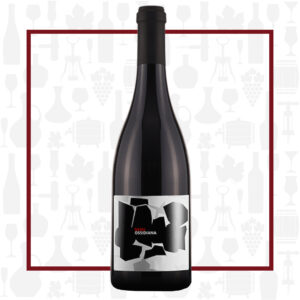Cellar Profile
Tenuta di Castellaro’s breathtaking, sustainable winery is located on Lipari, the largest of Sicily’s volcanic Aeolian Islands. It was here, in 2005 — in this rocky, mineral rich soil — that Massimo Lentsch and Stefania Frattolillo, a couple of entrepreneurs from Bergamo, planted Castellaro’s first vineyards. Once a popular region for its rich, extracted sweet wines, the Lipari wine industry was decimated by the phylloxera outbreak in the late 1800s. Castellaro’s stunning production and burgeoning reputation has focused the world’s eyes on this tiny island once again. The winery is farmed organically, with a keen eye toward sustainability and minimal ecological impact. It is powered by cutting-edge bio-energy, including solar chimneys and wind towers – an easy source of power as the island is lashed by near-constant ocean winds. Rare Lipari Island varieties such as their famed Malvasia delle Lipari and Corinto Nero, as well as indigenous Sicilian grapes like Carricante and Nero d’Avola, are planted on steep slopes and are grown “wild”, allowing native flora and fauna to be part of the ecosystem, to add to the rich biodiversity. The wines of Castellaro are known for their elegance, rich primary fruit and delicious, lip-smacking lick of salinity from the salt-infused rains and winds of the southern Mediterranean.
Region
Lipari Island is part of the Aeolian Archipelago, a historic group of islands on the north coast of Sicily in the Tyrrhenian Sea. Lipari is the largest of these islands and home to the winery. These incredibly fertile, volcanic soils were first planted to vine by the Phoenicians and have been producing wine for thousands of years. Steady breezes on this windswept island help cool the bunches during the hottest part of the days, making extremely hospitable conditions for organic and sustainable farming practices. The region is home to the indigenous varietals Corinto Nero and Malvasia delle Lipari. The deep volcanic sands sit atop large beds of porous volcanic slabs providing excellent drainage; even the most rainy years have little detrimental effect on the grapes.
Vineyard
The Tenuta di Castellaro Vineyard is located on Piana di Castellaro, a volcanic plain rising 1150 ft above the nearby Mediterranean. It is farmed organically, with a keen eye toward sustainability and minimal ecological impact. Dark sandy soils are mixed with a deep layer of rich, fertile volcanic soils, with high levels of magnesium, nitrogen, calcium and potassium. Sandier soils are often deficient in potassium, which leads to poor photosynthesis and affects fruit yields and proper berry ripening. The proximity to the sea creates a near constant wind, which helps prevent mildew and most fungus and which cools the berries during the midday heat while also occasionally lashing them with a fine slat spray, giving the finished wines their characteristic salty tang. The vines are “head-trained”, with large clusters affixed to upright poles at consistent distances, allowing for higher planting density and focusing of the plant’s energy on fewer, healthier grape bunches.
Varieties
Corinto Nero can trace its lineage to ancient Greece but was brought to Sicily millenia ago has become the signature grape of Lipari Island. A hardy variety, it grows particularly well in sandy soils and can handle intense winds, making it well-suited to the Sicilian climate. Fairly vigorous, care must be taken with canopy management to ensure even ripening, however it retains balancing acids, even in riper vintages. Nero d’Avola has become synonymous with Sicilian viticulture and is the most planted grape on the island. Growing well in dry conditions, it gives dark coloured, extracted wines with marked tannic structure. It can become quite heavy in alcohol, but when planted at the higher elevations of Etna often gives lighter, fresher, aromatic wines of elegance. Used primarily as a blending partner for much of its existence, it has grown in popularity with the recent growth in Silician wine sales.
Winemaking
Hand-harvested, with careful bunch selection. The grapes are sorted, de-stemmed and gently pressed before an extended whole-bunch maceration and long fermentation. The wine is then transferred into neutral oak barrels for malolactic fermentation and aging for approximately one year before another year of aging in stainless. It is aged another 5 months in bottle (unfined and unfiltered) before release.
Tasting Notes
Deep purple with ripe black cherry, cassis, pomegranate and tomato leaf on the nose. The palate is ripe and full-bodied, with a balancing freshness given by the characteristic saline tang of Lipari and a long, kirsch finish. Tannins are evident but supple and the wine is drinkable now. Serve at cellar temperature with braised lamb, roast beef or grilled flatbreads.

 info@buyersandcellars.ca
www.buyersandcellars.ca
info@buyersandcellars.ca
www.buyersandcellars.ca